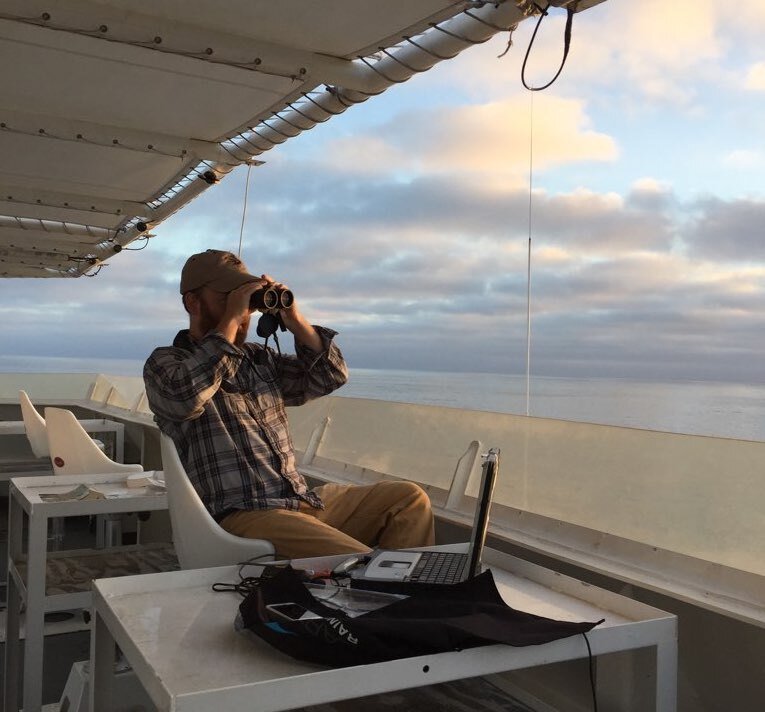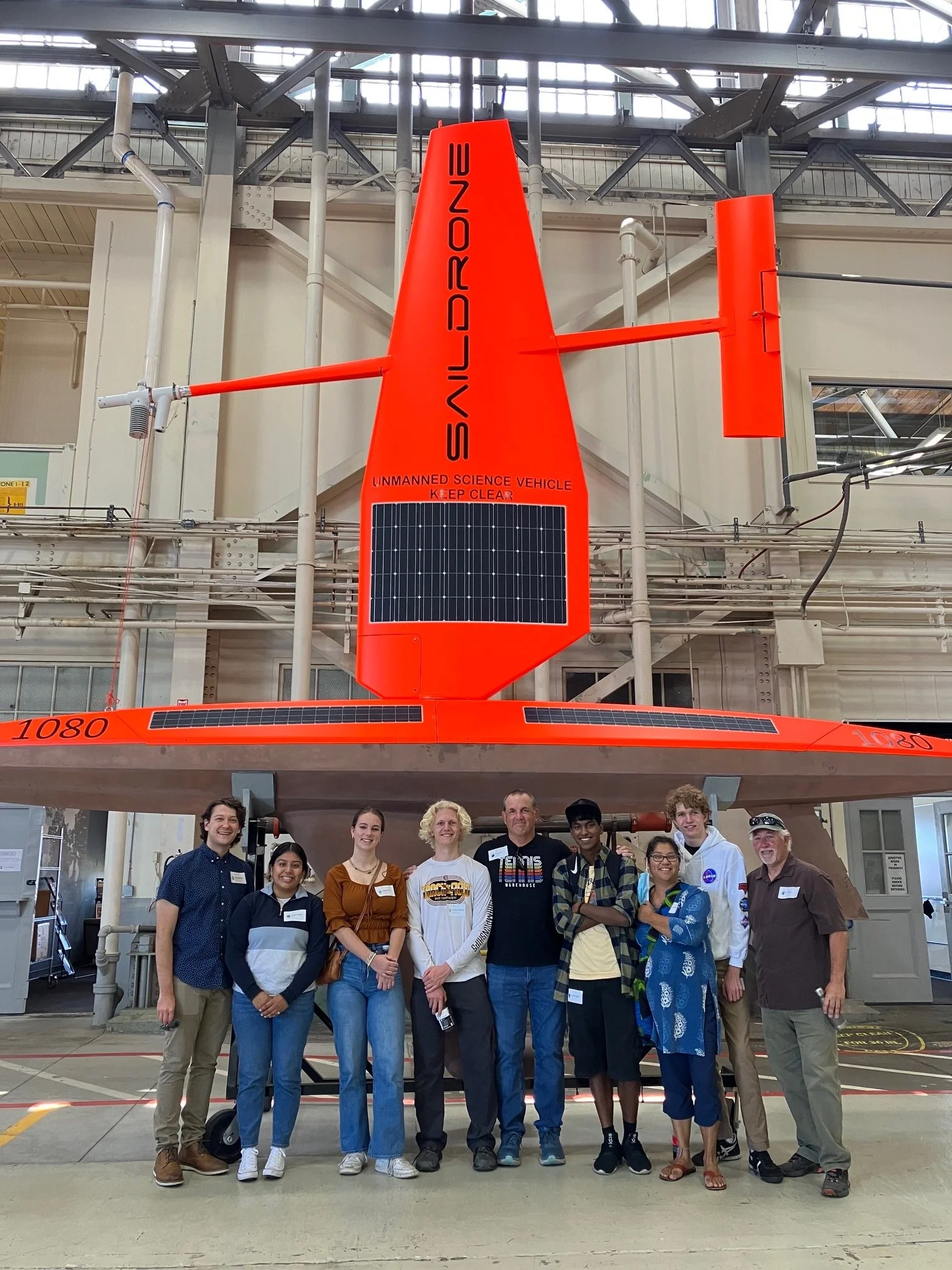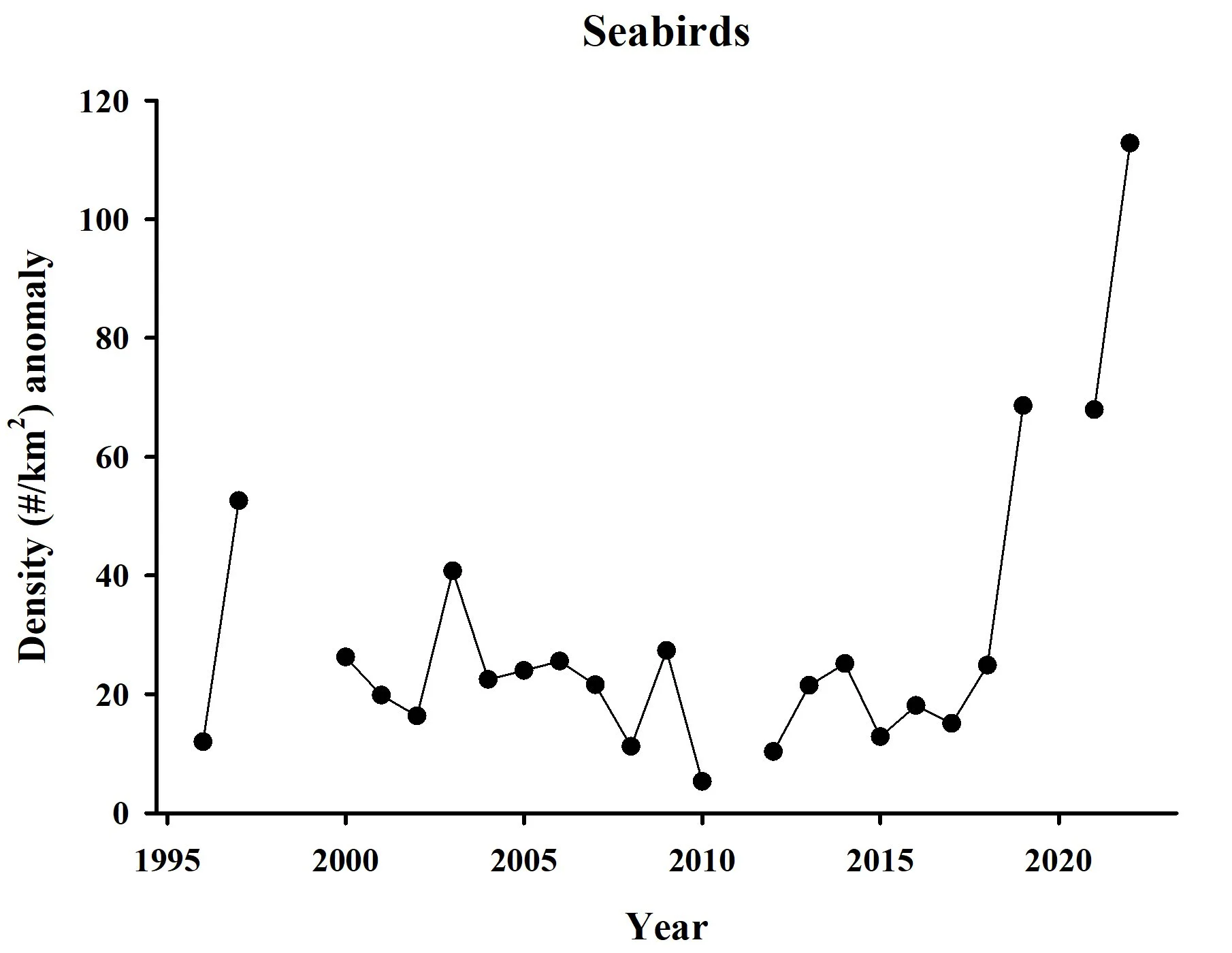Farallon Institute Newsletter - Fall 2022
Brian Hoover conducting at-sea seabird observations.
Around The Office
This summer saw the return of researcher Brian Hoover to Farallon Institute’s staff. Brian was a FI post-doctoral researcher several years ago and then worked as a professor at Chapman University. Brian returns to Farallon Institute now as a Principal Scientist, and will lead projects focusing on seabird ecology and ongoing effects of climate change. Other endeavors that Brian will participate in include at-sea seabird monitoring, and developing internship and outreach opportunities that will help improve diversity and equity in the next generation of marine scientists. You can read more about Brian here.
State of the Ocean — Central-Northern California
The California coast is currently in a cool state in the central and northern sections (see figure) thanks to strong upwelling and the impacts from La Niña and the negative phase of the Pacific Decadal Oscillation (PDO). The Southern California Bight remains warm. In general, these are very good conditions for the California Current marine ecosystem. Furthermore, La Niña conditions are forecasted to continue at least through the rest of the year, which would make it our third consecutive La Niña year, an event not seen since 1998–2001. However, we live in times of strong variability. On average, water conditions seem normal (except in Southern California when warming is evident), but that is because we have recently experienced both cold and warm periods. Through the summer there were periods of strong upwelling and very cold water, but we have also had some warm periods during upwelling relaxation that reached marine heatwave status.
What will come next? It will probably stay variable, sometimes with La Niña managing to keep our waters cool, sometimes with the warming that characterizes our post-upwelling season with the help of offshore marine heatwaves.
Sea Surface Temperature from the NASA State of the Ocean website for August 22, 2022.
FI staff and summer interns visiting the Saildrone headquarters.
First FI summer internship program
This summer, Farallon Institute recruited five students who graduated from the Petaluma High School Class of 2022 to participate in the first Scientific Computer Programming Internship. The internship lasted ten weeks, during which the interns learned coding to address questions in science, about the specific science that we conduct at Farallon Institute, and how we use programming to enhance our research. The interns primarily worked on a project funded by NASA that involved coding analysis and plotting of data collected by satellites and uncrewed Saildrone vehicles. Some of these analyses included classifying sections of water along the California Current based on temperature and salinity, aggregating and selecting Saildrone cruise data to make them easier to analyze, and processing satellite data for other variables not collected during the Saildrone cruises, such as chlorophyll.
A highlight of the internship was when the interns and staff members from the Farallon Institute were invited on a tour of the Saildrone headquarters in Alameda, California. The tour included a presentation from the company on the many uses of their data, including how the Farallon Institute uses it in our science. There was also a guided walk around the facility where the vessels are constructed and assembled, as well as the area of San Francisco Bay where vessels are tested before being deployed to collect data at sea. This provided an incredible experience for the interns to see how the data they analyzed during the internship was collected and to ask questions of the Saildrone staff.
The interns also had opportunities this summer to contribute to ongoing research projects at the Farallon Institute. These projects included accessing satellite chlorophyll data for seabird nesting colonies around the world, and creating a model to track particles such as plankton through time in the ocean based on ocean current models. Overall, the internship was an enriching experience for both Farallon Institute staff and the interns, and we wish them all well as they start college this fall.
Seabird density (#birds/km^2) of nine selected species seen on the RREAS, 1996-2022. Note the increase in recent years.
At-sea seabird observations 2022
The Farallon Institute at-sea seabird monitoring season just wrapped up, with three surveys completed in 2022. Our observers participated on the spring and summer California Cooperative Oceanic Fisheries Investigations (CalCOFI) surveys this year, as well as NOAA’s annual Rockfish Recruitment Ecosystem Assessment Survey (RREAS) in the summer. These surveys covered the ocean off of central and southern California. The observer sits high on the ship as it transits across the ocean, and records the species, number, and behavior of all seabirds seen within 300 meters of one side of the ship. In this way, we can calculate density of the birds at sea as their abundance in a measured area. GPS equipment continually records the position of the ship and location of the seabird observations.
The record of seabird observations on these surveys extends back to 1987 for CalCOFI and 1996 for RREAS – long time series such as these are very useful for detecting change over time. Since we record all of the species we encounter, we can ask a variety of community-level questions from the data including if more birds are present that prefer warm water or cold water, or if there are changes in locally-breeding species versus the long-ranging migratory species. After analyzing some of these cruise trends, Farallon Institute provides these data and project reports in online repositories for others to use in their analyses, as well.




